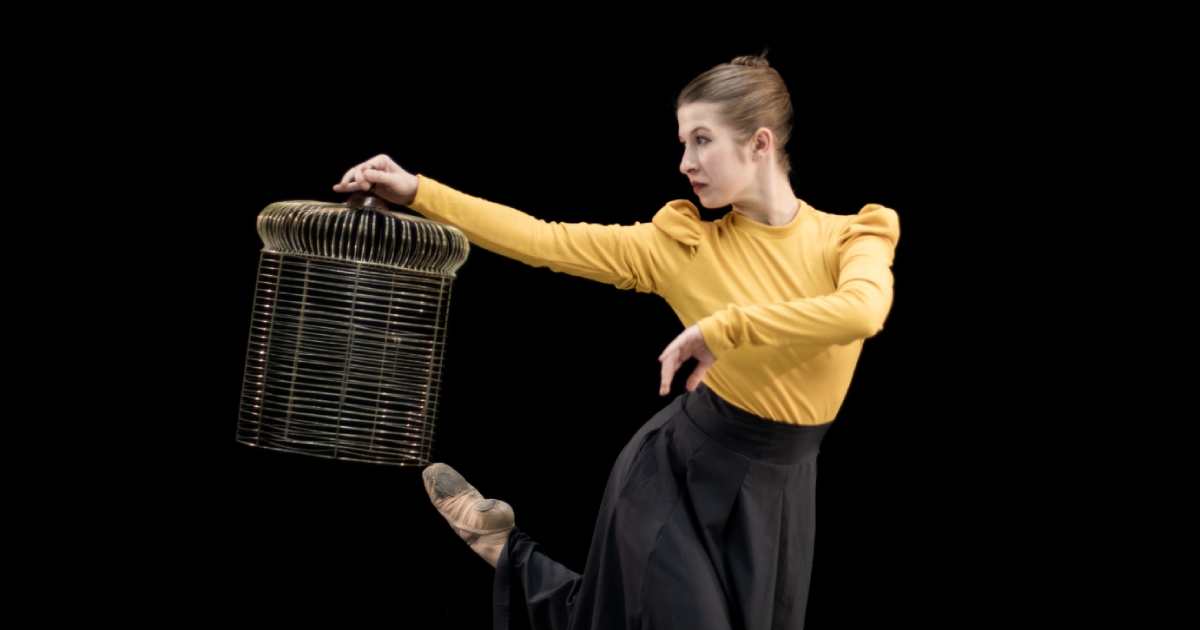“Trifles”, Susan Glaspell’s 1916 one-act play regarded as a classic piece of first-wave feminist literature, is based on a true story of how two women protected a battered wife who murdered her husband by hiding evidence that otherwise went undetected by police. Glaspell was a newspaper reporter in Iowa who covered the crime, and after transforming the story into a drama for stage, she also adapted it as a short story, so gripping and popular was the tale.
And more than a century later, Grand Rapids’ Deos Contemporary Ballet has reinterpreted “Trifles” as an original two-act ballet quite beautifully presented it at St. Cecilia Music Center.
In this iteration, the story unfolds as part spoken drama and part classical ballet. With effective, minimal lights, set, and period costumes as well as a cast of seven, three men speak rather than dance to set the stage for the mystery two of the men’s wives will solve. The women are silent but their movement speaks volumes—in stark contrast to the men’s oblivious oafishness. The men cannot see what is directly in front of them: a dead canary and a birdcage that symbolizes the wife whose joy was snuffed out by her husband’s abuse, and erratic stitching in a quilt that shows her descent into madness that drove her to murder her abuser.
These items are on stage and the two women occupy themselves with discovering them, dancing with them, and envisioning the truth of what happened between Minnie and John Wright, which unfolds in spectacular scene, John appearing as a dark, silent figure, and Minnie expressing her complex emotions as well as the murder itself through a gripping, frenetic, harrowing, and highly symbolic dance.
Leah Haggard plays the victim here, a diminished woman who becomes unbound as she removes a ribbon from her hair and uses it to strangle the man who has ruined her. Her hands shake after she finds her light downstage right in her very own Lady MacBeth moment.
This is the dramatic apex that comes in Act II after she’s largely only been seen in a rocking chair she vacates to leave rocking, empty.
Other overt symbolism abounds in the movement—crossed arms with hands at neck not just as choking in terms of the murder but as a battered wife’s inability to breathe; a finger to lips as a motif representing the secret kept among women, an act of protection.
But the greatest symbolism is in the form of storytelling itself. Classical ballet is an art form that glorifies the feminine, places women’s bodies quite literally on high—in grand lifts and on pointe shoes, in defiance of gravity. And yet in “Trifles”, the dancers wear soft shoes and the women dance unpartnered by men. The women are each other’s partners and they often dance in tandem with one another.
This is the best of Artistic Director Tess Sinke’s choreography—the powerful port de bras, the anguish, nervousness, fear expressed through the arms and chest, all with wonderful musicality connected to the recording of the Jean Sibelius string quartet. Much of the dance is very academic— repetitive penchés in all directions, chaine turns—and extremely well executed by dancers with grace, and terrific expressivity.
“Women are used to worrying over trifles,” the men quip, oblivious to all that has transpired. The men come off as utter buffoons, heightened by their clunky walks and words amid the sheer elegance and nuance of the women dancers. There is nothing subtle about “Trifles” in any of its iterations, and this ballet makes even more clear its themes and symbolism through form—and does so quite beautifully.
Trifles
Deos Contemporary Ballet
Sept. 30-Oct. 1
https://www.deosballet.com/





